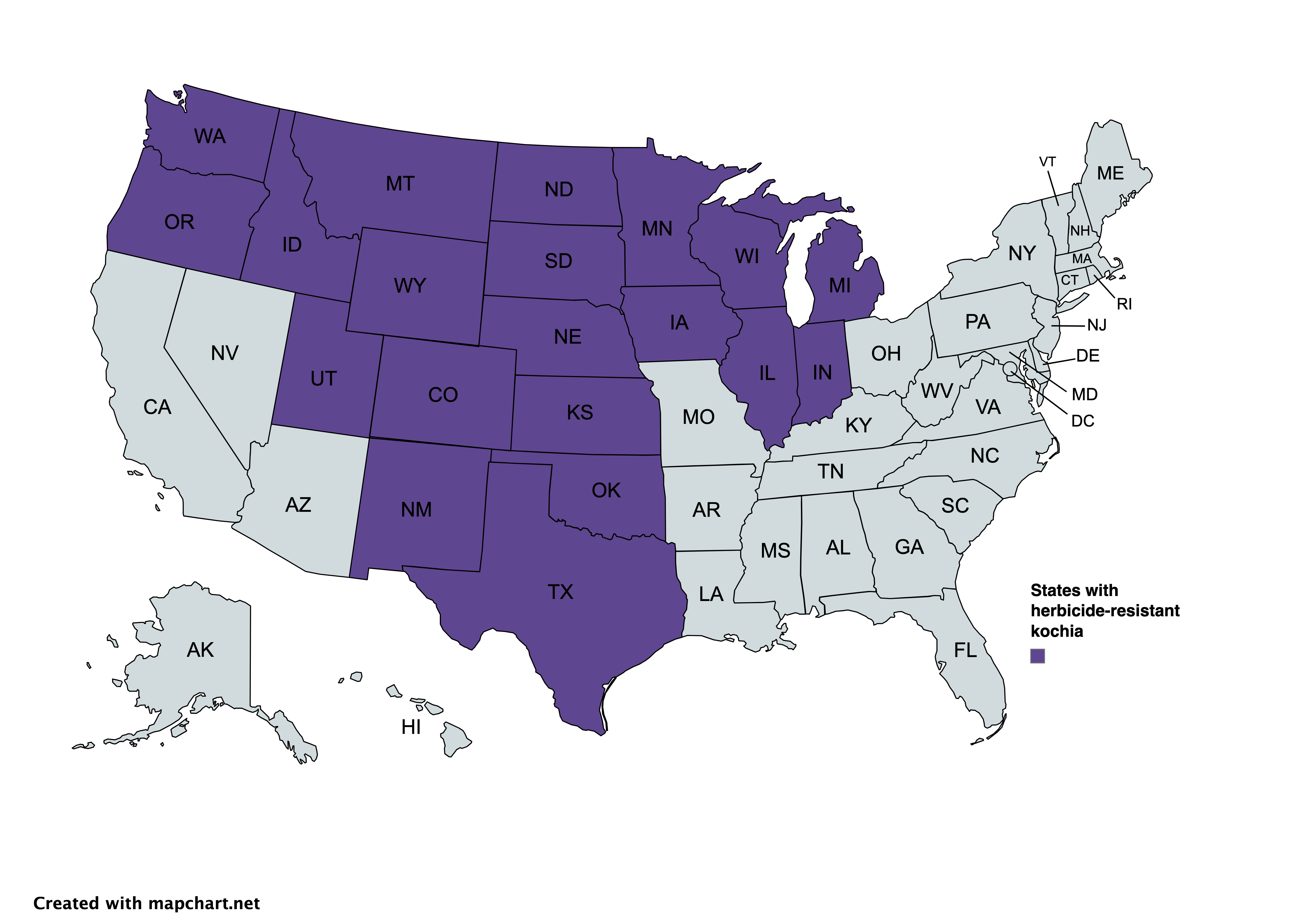Field Facts: Kochia

Kochia is an annual broadleaf weed that emerges in early summer and quickly reproduces, even in less-than-ideal weather conditions. Get the facts on kochia management below.

Because most kochia seeds do not live for more than a year, preventing seed production for a single year will significantly help reduce infestations in following years. As germination occurs early in the season, control methods are the most effective in early spring before the seeds have set.
Consult your local Corteva Agriscience representative for more insights on kochia management in your area.
1United Soybean Board. 2023. Kochia. https://iwilltakeaction.com/weeds/identification/kochia/
2Casey, P.A. 2009. Plant Fact Sheet for kochia (Kochia scoparia). https://plants.usda.gov/DocumentLibrary/factsheet/pdf/fs_kosc.pdf
™ ® Enlist, Enlist Duo, Enlist E3, Enlist One, EverpreX, Kyro, Resicore, Sonic and SureStart are trademarks of Corteva Agriscience and its affiliated companies. ® Liberty is a registered trademark of BASF. The transgenic soybean event in Enlist E3® soybeans is jointly developed and owned by Corteva Agriscience and M.S. Technologies L.L.C. Enlist Duo® and Enlist One® herbicides are not registered for sale or use in all states or counties. Contact your state pesticide regulatory agency to determine if a product is registered for sale or use in your area. Enlist Duo and Enlist One herbicides are the only 2,4-D products authorized for use with Enlist® crops. Consult Enlist® herbicide labels for weed species controlled. EverpreX®, Kyro™, Resicore®, Sonic® and SureStart® II are not registered for sale or use in all states. Kyro, Resicore and SureStart II are not available for sale, distribution or use in Nassau and Suffolk counties in the state of New York. Contact your state pesticide regulatory agency to determine if a product is registered for sale or use in your state. Always read and follow label directions.